-
 Bitcoin
Bitcoin $117400
-0.25% -
 Ethereum
Ethereum $3762
-0.57% -
 XRP
XRP $3.072
-1.57% -
 Tether USDt
Tether USDt $1.000
0.02% -
 BNB
BNB $786.5
-2.10% -
 Solana
Solana $175.6
-3.15% -
 USDC
USDC $0.9999
0.01% -
 Dogecoin
Dogecoin $0.2166
-2.88% -
 TRON
TRON $0.3268
-2.89% -
 Cardano
Cardano $0.7540
-3.38% -
 Hyperliquid
Hyperliquid $41.82
-3.43% -
 Sui
Sui $3.723
-2.44% -
 Stellar
Stellar $0.4030
-3.66% -
 Chainlink
Chainlink $17.47
-1.80% -
 Bitcoin Cash
Bitcoin Cash $568.2
1.00% -
 Hedera
Hedera $0.2531
-3.51% -
 Avalanche
Avalanche $23.09
-4.91% -
 Litecoin
Litecoin $109.6
1.22% -
 UNUS SED LEO
UNUS SED LEO $8.954
-0.09% -
 Toncoin
Toncoin $3.366
-0.23% -
 Ethena USDe
Ethena USDe $1.001
0.01% -
 Shiba Inu
Shiba Inu $0.00001269
-2.93% -
 Uniswap
Uniswap $9.816
-4.14% -
 Polkadot
Polkadot $3.754
-3.49% -
 Monero
Monero $308.0
-2.79% -
 Dai
Dai $1.000
-0.01% -
 Bitget Token
Bitget Token $4.497
-0.77% -
 Pepe
Pepe $0.00001117
-2.61% -
 Cronos
Cronos $0.1428
-0.40% -
 Aave
Aave $269.9
-4.24%
What is the EMA ribbon strategy in crypto trading?
The EMA ribbon strategy uses multiple exponential moving averages to identify trend strength and direction in crypto trading, with fanning lines signaling strong momentum and converging lines indicating consolidation.
Jul 30, 2025 at 11:56 am
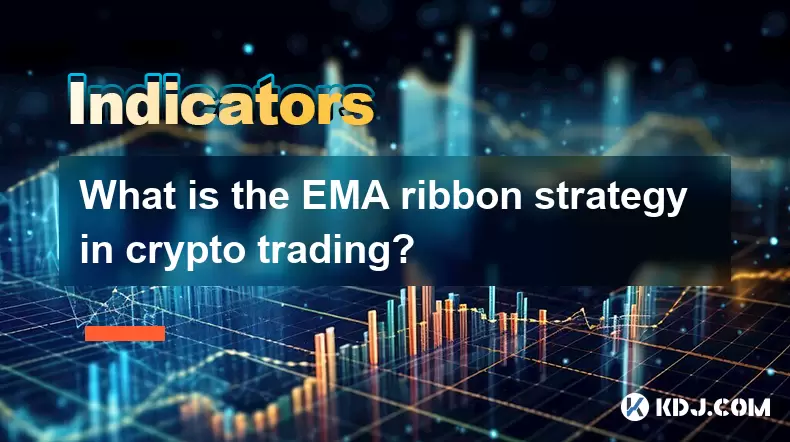
Understanding the EMA Ribbon Strategy in Cryptocurrency Trading
The EMA ribbon strategy is a technical analysis tool used by traders in the cryptocurrency market to identify trends, momentum shifts, and potential entry or exit points. It involves plotting multiple Exponential Moving Averages (EMAs) on a price chart, each with a different period, to form a "ribbon-like" visual pattern. The core idea behind this strategy is to assess the strength and direction of a trend by observing how these EMAs are spaced and aligned relative to each other. When the EMAs are stacked closely together, it often signals consolidation or a weak trend. Conversely, when they fan out in a parallel formation, it indicates a strong, sustained trend.
This strategy is particularly effective in volatile markets like crypto, where prices can shift rapidly. Traders use the ribbon to distinguish between ranging and trending conditions. A key advantage is that EMAs react faster to price changes compared to Simple Moving Averages (SMAs), making them more suitable for short- to medium-term trading decisions.
Components of the EMA Ribbon Setup
To implement the EMA ribbon, traders typically use between 8 to 12 EMAs with varying timeframes. Common periods include 8, 12, 16, 20, 24, 28, 32, and 36. These values can be adjusted based on the trader’s preferred timeframe and the cryptocurrency being analyzed. For example, shorter EMAs (e.g., 8 and 12) react more quickly to price movements, while longer EMAs (e.g., 32 and 36) provide a smoother, broader view of the trend.
- Add multiple EMA indicators to your charting platform (e.g., TradingView, MetaTrader).
- Configure each EMA with a different period, starting from a short-term value and increasing incrementally.
- Assign distinct colors to each EMA line for easy visual identification.
- Ensure all EMAs are set to the Exponential Moving Average type, not SMA or WMA.
- Apply the ribbon to a candlestick chart of a cryptocurrency pair, such as BTC/USDT or ETH/USD.
The visual clustering or spreading of these lines helps traders interpret market sentiment. When all EMAs are ascending and spaced apart, it suggests a strong bullish trend. When descending and fanned out, it indicates a strong bearish trend.
Identifying Trend Direction and Strength
One of the primary uses of the EMA ribbon is to determine the direction and strength of a trend. When the EMAs are aligned in an upward-sloping stack with increasing spacing between them, it confirms a robust bullish momentum. This formation often occurs during strong upward price movements in cryptocurrencies like Bitcoin or altcoins experiencing breakout phases.
- Look for all EMA lines to be positioned below the current price in a bullish scenario.
- Observe the spacing: wider gaps between EMAs indicate increasing momentum.
- In a bearish trend, all EMAs should be above the price, sloping downward with expanding separation.
When the EMAs converge into a tight bundle, it signals a period of consolidation or indecision. This could precede a breakout in either direction. Traders often wait for the ribbon to re-expand before taking a position. A narrowing ribbon may also suggest a weakening trend, prompting caution or position exits.
Entry and Exit Signals Using the EMA Ribbon
Traders use specific patterns within the EMA ribbon to generate entry and exit signals. A common bullish entry signal occurs when the price moves above all EMAs, and the ribbon begins to fan out upward. This suggests the start of a new uptrend or the continuation of an existing one.
- Wait for the price to close above the longest EMA in the ribbon (e.g., 36-period).
- Confirm that shorter EMAs are crossing above longer ones, indicating accelerating momentum.
- Enter a long position once the ribbon shows a clear upward fan formation.
- Place a stop-loss just below the lowest EMA in the ribbon to manage risk.
For exits, traders may consider closing long positions when the price falls below the shortest EMA or when the ribbon starts to contract. A bearish reversal signal occurs when the price drops below the entire ribbon and the EMAs begin to slope downward with increasing gaps.
- Watch for the price to close below the shortest EMA (e.g., 8-period).
- Confirm with volume spikes or bearish candlestick patterns.
- Exit long positions or initiate short positions when the ribbon fans downward.
- Set stop-loss above the highest EMA to protect against false breakdowns.
Combining the EMA Ribbon with Other Indicators
While the EMA ribbon is powerful on its own, combining it with other technical tools enhances its reliability. Many traders pair it with volume indicators, Relative Strength Index (RSI), or MACD to confirm signals.
- Use RSI to check for overbought or oversold conditions when the ribbon suggests a trend reversal.
- Apply volume analysis to validate breakouts—rising volume during a ribbon expansion increases confidence.
- Combine with support and resistance levels to identify high-probability zones where ribbon signals align with key price levels.
For example, if the EMA ribbon shows a bullish fan-out near a historical support level and RSI is rising from oversold territory, the confluence strengthens the buy signal. Similarly, a bearish ribbon formation at a resistance level with high volume adds credibility to a short opportunity.
Common Mistakes and How to Avoid Them
Traders often misinterpret the EMA ribbon due to impatience or incorrect settings. One common error is acting on a ribbon that is still tightly bunched, mistaking it for a breakout when it may just be noise. Another issue is using too many EMAs, which can clutter the chart and make interpretation difficult.
- Avoid trading during low volatility periods when the ribbon is compressed.
- Do not rely solely on the ribbon—always incorporate price action and volume.
- Customize EMA periods based on the asset’s behavior; for instance, faster EMAs may work better for highly volatile altcoins.
- Backtest the strategy on historical data to understand how it performs in different market cycles.
Using fixed EMA values across all cryptocurrencies without adjustment can lead to poor results. Each digital asset has unique volatility and trend characteristics, requiring tailored configurations.
Frequently Asked Questions
Can the EMA ribbon strategy be used on all timeframes?
Yes, the EMA ribbon can be applied to any timeframe, from 1-minute charts to weekly charts. However, signals on higher timeframes (e.g., 4-hour or daily) are generally more reliable due to reduced noise and stronger trend confirmation.
How do I choose the right EMA periods for crypto trading?
Start with a standard setup like 8, 12, 16, 20, 24, 28, 32, and 36. Adjust based on the cryptocurrency’s volatility. For highly volatile assets, slightly longer periods may reduce false signals.
What does it mean when the EMA ribbon collapses inward?
An inward collapse indicates decreasing momentum and possible trend exhaustion. It often precedes a consolidation phase or reversal, especially if accompanied by declining volume.
Is the EMA ribbon suitable for automated trading bots?
Yes, the EMA ribbon logic can be coded into trading algorithms. Conditions such as EMA alignment, spacing, and price position relative to the ribbon can be programmed to trigger buy or sell orders.
Disclaimer:info@kdj.com
The information provided is not trading advice. kdj.com does not assume any responsibility for any investments made based on the information provided in this article. Cryptocurrencies are highly volatile and it is highly recommended that you invest with caution after thorough research!
If you believe that the content used on this website infringes your copyright, please contact us immediately (info@kdj.com) and we will delete it promptly.
- LYNO Token Presale: AI Arbitrage Revolution in DeFi
- 2025-07-31 05:11:11
- Pepecoin Successors: Can These Cryptocurrencies Make You a Millionaire?
- 2025-07-31 05:50:12
- AML Bitcoin Fraud: Cracking Down on Crypto Crime in the Big Apple and Beyond
- 2025-07-31 04:33:53
- Cardano (ADA) in 2025: Navigating Crypto's Future
- 2025-07-31 03:52:07
- Solana Meme Coin Price Prediction: Will the Frog Outleap the Dog?
- 2025-07-31 03:52:07
- Bitcoin's Bullish Outlook: CryptoQuant's Insights on Futures Market Cooling
- 2025-07-31 03:59:10
Related knowledge

How does the VWAP line help in identifying overbought and oversold market conditions?
Jul 31,2025 at 05:19am
Understanding the VWAP Line and Its Role in Technical AnalysisThe Volume Weighted Average Price (VWAP) is a critical tool used by traders within the c...
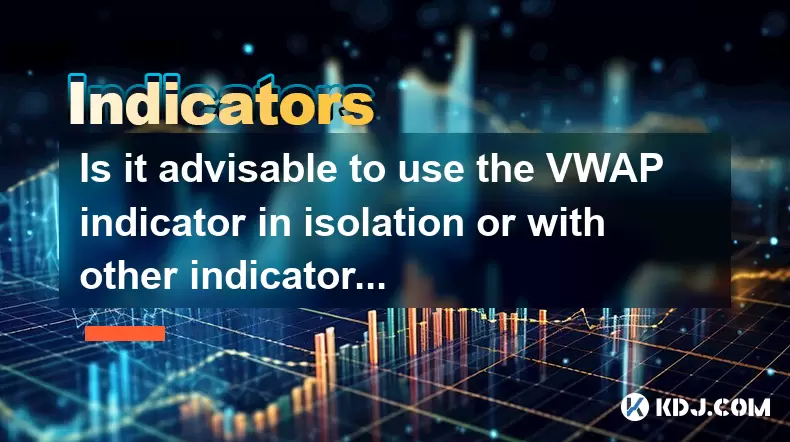
Is it advisable to use the VWAP indicator in isolation or with other indicators?
Jul 31,2025 at 06:48am
Understanding the VWAP Indicator and Its Core FunctionalityThe Volume Weighted Average Price (VWAP) is a widely used technical analysis tool in the cr...
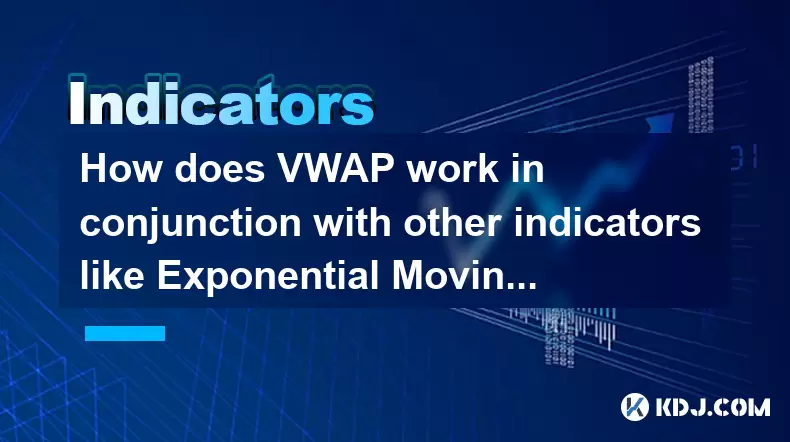
How does VWAP work in conjunction with other indicators like Exponential Moving Averages (EMAs)?
Jul 31,2025 at 04:38am
Understanding VWAP and Its Role in Crypto TradingThe Volume Weighted Average Price (VWAP) is a critical analytical tool in cryptocurrency trading, par...
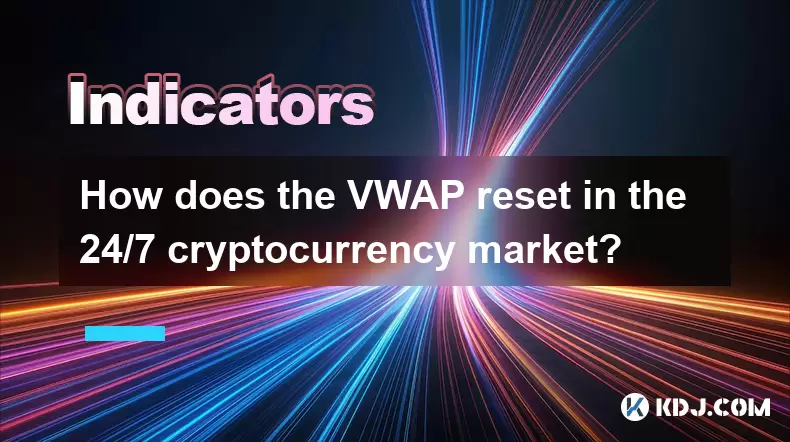
How does the VWAP reset in the 24/7 cryptocurrency market?
Jul 31,2025 at 06:38am
Understanding VWAP in Cryptocurrency MarketsThe Volume Weighted Average Price (VWAP) is a trading benchmark that calculates the average price of an as...

What exactly does the VWAP indicator measure?
Jul 31,2025 at 03:26am
Understanding the Core Concept of VWAPThe VWAP (Volume Weighted Average Price) indicator measures the average price of a financial asset, weighted by ...
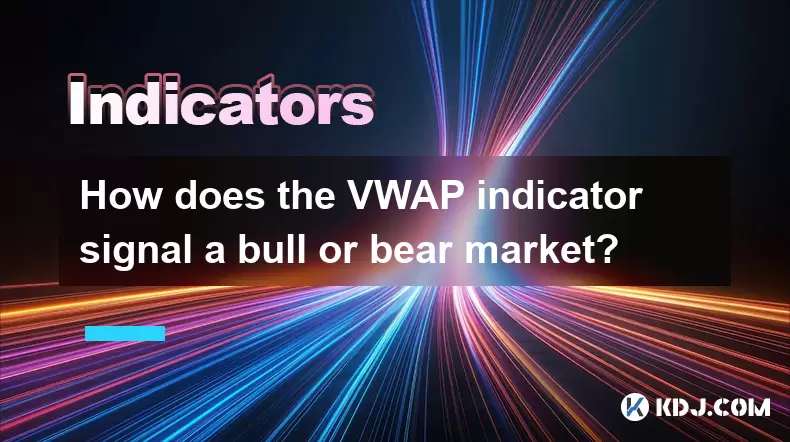
How does the VWAP indicator signal a bull or bear market?
Jul 31,2025 at 02:57am
Understanding the VWAP Indicator in Cryptocurrency TradingThe Volume Weighted Average Price (VWAP) is a widely used technical analysis tool in cryptoc...

How does the VWAP line help in identifying overbought and oversold market conditions?
Jul 31,2025 at 05:19am
Understanding the VWAP Line and Its Role in Technical AnalysisThe Volume Weighted Average Price (VWAP) is a critical tool used by traders within the c...

Is it advisable to use the VWAP indicator in isolation or with other indicators?
Jul 31,2025 at 06:48am
Understanding the VWAP Indicator and Its Core FunctionalityThe Volume Weighted Average Price (VWAP) is a widely used technical analysis tool in the cr...

How does VWAP work in conjunction with other indicators like Exponential Moving Averages (EMAs)?
Jul 31,2025 at 04:38am
Understanding VWAP and Its Role in Crypto TradingThe Volume Weighted Average Price (VWAP) is a critical analytical tool in cryptocurrency trading, par...

How does the VWAP reset in the 24/7 cryptocurrency market?
Jul 31,2025 at 06:38am
Understanding VWAP in Cryptocurrency MarketsThe Volume Weighted Average Price (VWAP) is a trading benchmark that calculates the average price of an as...

What exactly does the VWAP indicator measure?
Jul 31,2025 at 03:26am
Understanding the Core Concept of VWAPThe VWAP (Volume Weighted Average Price) indicator measures the average price of a financial asset, weighted by ...

How does the VWAP indicator signal a bull or bear market?
Jul 31,2025 at 02:57am
Understanding the VWAP Indicator in Cryptocurrency TradingThe Volume Weighted Average Price (VWAP) is a widely used technical analysis tool in cryptoc...
See all articles

























































































